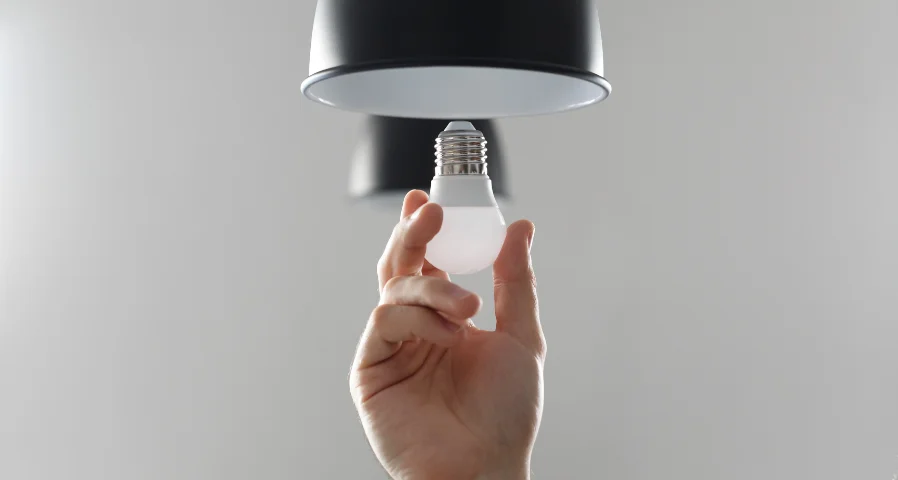Daylighting Controls & Daylight Savings: Optimizing Natural Light Through the…
Studies have shown that natural lighting has proven to improve workplaces by helping employees be more…

Businesses and municipalities are increasingly recognizing the advantages of upgrading to energy-efficient lighting systems. LED retrofits for businesses have become one of the most effective ways to reduce operational costs, improve workplace safety, and contribute to sustainability goals. Case studies from Newmarket and Medicine Hat highlight just how impactful these lighting upgrades for energy savings can be.
Traditional lighting systems, such as fluorescent, incandescent, and metal halide lamps, consume significantly more electricity compared to LEDs. For many businesses, this translates into unnecessarily high utility bills. By making the switch, organizations can immediately see reductions in energy use.
For instance, Magna International, a global auto parts manufacturer, installed more than 1,000 LED fixtures at its Newmarket facility. This single lighting retrofit resulted in annual energy savings of $100,000. Similarly, AMG Metals replaced nearly 300 outdated fixtures with LEDs, reducing consumption and improving efficiency across its facility.
The City of Medicine Hat also demonstrated the power of LED retrofits by replacing over 2,300 lights and upgrading more than 800 fluorescent tubes across 12 municipal facilities. These changes cut electricity use by 30 to 50 percent, depending on the site, resulting in nearly $98,000 in annual utility savings.
While cost savings are often the first motivator, businesses quickly find additional benefits after installation. One of the most noticeable improvements comes in lighting quality. Poorly lit environments can contribute to accidents, eye strain, and lower productivity.
AMG Metals noted that after their retrofit, the facility not only reduced energy usage but also created a brighter, safer environment for employees. Consistent, high-quality LED light helps workers see tasks more clearly, particularly in manufacturing, warehouse, or shop environments where precision and safety are critical.
In Medicine Hat, upgrades at community centers, transit facilities, and recreational spaces delivered not just efficiency gains but better visibility for the public. At Co-op Place, for example, outdated 320-watt lamps were replaced with brighter 85-watt LEDs, enhancing the visitor experience while consuming a fraction of the energy.
One of the reasons LED retrofits for businesses are so effective is their versatility. LEDs can be tailored to suit a wide range of industries and facility types. Manufacturing plants and warehouses benefit from brighter, more focused lighting that improves safety and productivity. Retail stores and restaurants use LEDs to create inviting atmospheres that enhance customer experiences while saving energy. Non-profit organizations, like the Newmarket Food Pantry, stretch their budgets further by lowering operating costs. Even municipal facilities, from airports to recreation centers, are upgrading to LEDs to cut costs and reduce emissions while ensuring high-quality lighting for the public.
This adaptability makes LED technology a smart investment regardless of industry, with each application offering unique advantages, from safety to ambiance to cost savings.
Another compelling reason for businesses and municipalities to pursue lighting upgrades for energy savings is the environmental impact. Reducing electricity consumption directly decreases greenhouse gas emissions, an increasingly important goal for organizations aligning with sustainability and ESG commitments.
The Newmarket Food Pantry replaced 75 fixtures, leading to an estimated reduction of 2.6 tons of carbon dioxide each year. For a non-profit organization, those savings extend beyond the environment. They free up thousands of dollars to provide more meals and expand community support services.
Medicine Hat’s city-wide retrofits are expected to reduce lifetime greenhouse gases by an estimated 3,662 tons, a substantial contribution to municipal climate action targets.
Incentive programs have played a critical role in making these projects possible. Rebates through provincial and municipal programs help offset upfront costs, allowing businesses and municipalities to achieve payback more quickly.
Incentives are available through local, state or federal programs as well as local utility providers. Small businesses or nonprofits see exceptional benefits from rebates on energy upgrades due to them having tighter budgets
The case studies from Newmarket and Medicine Hat showcase the transformative potential of LED retrofits for businesses, charities, and municipalities alike. The advantages are helping organizations by improving lighting quality, creating safer environments, and making meaningful environmental contributions.
For business owners, facility managers, and community leaders, LED retrofits represent one of the most straightforward, high-impact upgrades available today. By taking advantage of rebate programs and proven technology, organizations can achieve long-term savings while leading the way in sustainability. Click here to read the full articles, originally published by Newmarket Today and Chat News Today.